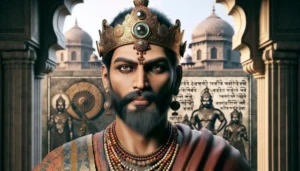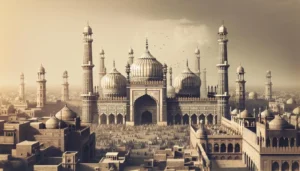Understanding how the President of India is elected offers fascinating insights into the democratic framework of the world’s largest democracy. This election process is unique and reflects the intricate balance of power among various branches of the government, showcasing an exemplary model of electoral sophistication. The role of the President, embodying the highest authority in the land, comes with significant powers and functions that influence the governance of the nation. Hence, comprehending the election of the President is paramount not just for those keen on the nuances of political science but for every citizen looking to grasp the essentials of their country’s governance.
This article delves into the pivotal aspects of how the President of India is elected, starting from the eligibility criteria that candidates must meet to the detailed workings of the electoral college and voting system. It further explores the nomination and election process, shedding light on every step that leads up to the counting of votes and declaration of results. Understanding these processes offers insight into the powers and functions of the President of India, illuminating the constitutional design that guides these elections. Through this exploration, readers will gain a comprehensive understanding of the election mechanism, enhancing their knowledge of India’s political fabric.
Eligibility Criteria for Becoming the President of India
Citizenship and Age Requirements
To be eligible for the presidency, a candidate must satisfy specific criteria related to citizenship and age. They must be a citizen of India, which is a fundamental requirement for candidacy. Additionally, the candidate must have completed the age of thirty-five years. These requirements ensure that the candidate has a mature perspective and sufficient life experience to handle the complexities of the presidential role.
Other Qualifications and Disqualifications
Apart from age and citizenship, there are additional qualifications related to the candidate’s eligibility in the context of political engagement. A candidate must be qualified to be elected as a member of the Lok Sabha, which is the lower house of India’s Parliament. This qualification implies that the individual must meet all the criteria necessary for Lok Sabha members, which includes aspects like soundness of mind, absence of criminal records, and adherence to other constitutional stipulations.
Furthermore, a critical disqualification criterion is that the candidate must not hold any office of profit under the Government of India or any state government, or any local or other authority subject to the control of any of these governments. This requirement is designed to ensure that the president remains impartial and unswayed by other governmental influences. However, the constitution provides exceptions to this rule, stating that a person shall not be deemed to hold an office of profit by reason only of being the President or Vice-President of the Union, the Governor of any State, or a Minister for the Union or any State.
Electoral College and Voting System
Composition of the Electoral College
The President of India is elected by an Electoral College that includes the elected members of both houses of Parliament and the elected members of the Legislative Assemblies of the States, as well as the National Capital Territory of Delhi and the Union Territory of Puducherry. This arrangement was formalized through the Constitution (Seventieth Amendment) Act, 1992. The Electoral College is structured to ensure representation from across the country, reflecting the federal structure of the nation.
The members of this Electoral College consist of:
- Elected members of the Rajya Sabha (the upper house of Parliament)
- Elected members of the Lok Sabha (the lower house of Parliament)
- Elected members of each state’s Legislative Assembly
- Elected members of the Legislative Assemblies in Union territories with legislatures, such as Delhi and Puducherry.
This comprehensive representation helps maintain a balance between the states and the union government, ensuring that the election of the President is a pan-Indian exercise reflecting the collective will of the legislative components of India.
Calculation of Vote Value
The value of each vote in the Presidential election is calculated based on a formula provided in the Constitution to maintain uniformity and parity in representation. According to Article 55(2) of the Constitution, the value of a vote of each MLA is calculated by dividing the total population of their state or union territory by the total number of elected members in the State Legislative Assembly, and then multiplying by 1000. This method ensures that the vote value reflects the population size of each state proportionally, thereby maintaining equity in representation.
For Members of Parliament, the vote value is calculated differently. The total value of votes of all MLAs across India is divided by the total number of elected MPs, which includes members from both the Lok Sabha and the Rajya Sabha. This calculation ensures that the collective weight of the states in the Electoral College is balanced against that of the Union represented by the Parliament.
The use of the 1971 census figures for these calculations, as stipulated by the Constitution (Eighty-fourth) Amendment Act, 2001, will continue until the first census post-2026 is conducted and its data published. This provision is in place to prevent frequent changes in vote value due to varying population figures from subsequent censuses.
The electoral mechanics set forth in the Constitution for the election of the President of India are designed to uphold the principles of federalism while ensuring a democratic process that is both equitable and representative of India’s diverse population.
Nomination and Election Process
Nomination Stage
Before the voting process begins, the nomination stage is crucial in setting the stage for the election. A candidate who wishes to stand in the election must file a nomination accompanied by a signed list of 50 proposers and 50 seconders. These proposers and seconders are members of the electoral college, which includes elected members from both the State and national levels. This requirement was established by the Election Commission in 1974 to prevent numerous, unviable candidates from contesting the polls. Additionally, it is important to note that an elector cannot propose or second the nomination of more than one candidate.
The nomination paper must be submitted in a prescribed form and within a specific time frame, typically between 11 AM and 3 PM on designated days, excluding public holidays. It is essential for the nomination paper to be subscribed by the required number of proposers and seconders, and presented to the Returning Officer either by the candidate themselves or by one of their proposers or seconders. Failure to meet these criteria or issues such as fraudulently obtained signatures can lead to the rejection of a nomination.
Election Procedure and Voting Method
Once the nomination stage is complete, the election proceeds under the system of proportional representation by means of the single transferable vote, and voting is conducted by secret ballot. In this system, every elector can mark as many preferences as there are candidates. The marking of the first preference is compulsory for the validity of a ballot paper, while marking subsequent preferences is optional.
During the counting process, the valid ballot papers are first segregated from the invalid ones. These valid papers are then distributed among the contesting candidates based on the first preference marked for each candidate. The value of votes each candidate receives is determined by multiplying the number of ballot papers marked with a first preference for them by the value of the vote that each ballot paper represents.
To win, a candidate must reach a quota, which is calculated by dividing the total value of valid votes by two, adding one to the quotient, and ignoring any remainder. If no candidate achieves this quota in the first round, the candidate with the fewest votes is eliminated, and their votes are redistributed to the remaining candidates based on the next available preferences marked on the ballot papers. This process continues until a candidate meets the required quota or until only one candidate remains, who is then declared the winner.
Counting of Votes and Declaration of Results
Vote Counting and Winning Criteria
The process of counting votes in the Presidential election begins with the sorting and verification of ballot papers by the returning officers. Members of Parliament use green pens to mark their preferences, while Members of Legislative Assemblies use pink pens, ensuring clarity and differentiation in the counting process. The sorted ballot papers are placed into designated trays for each candidate, facilitating an organized tally.
Each vote’s value is calculated based on the population of the voter’s state and the number of elected members in their respective legislative assemblies, adhering to a formula specified in the Constitution of India. For Members of Parliament, the vote value is standardized at 700, while the value for MLAs varies depending on their state’s population.
Once all votes are sorted, the counting begins, and the total value of votes polled by each candidate is calculated. The winning candidate must not simply gather the most votes but must achieve a majority through a specific quota. This quota is determined by dividing the total valid votes by two and adding one. If no candidate reaches this quota based on first-preference votes, the counting proceeds to additional rounds where the candidate with the fewest votes is eliminated, and their votes redistributed based on the next preferences.
Announcement of Results
The final stage of the Presidential election process is the declaration of results. This responsibility lies with the Returning Officer, who ensures that the counting is conducted fairly and in accordance with legal stipulations. Observers are present to verify that the counting adheres to the rules and that all counting agents have the opportunity to witness the process.
The results are typically announced on the same day as the counting, often by the evening, ensuring timely and transparent communication of the outcome. The detailed results include the total number of votes each candidate receives, the value of these votes, and the percentage of the electoral college votes secured by each candidate.
In cases where discrepancies or issues arise, such as problems with Electronic Voting Machines (EVMs), these are addressed post-counting, and the affected votes are reviewed to ensure accuracy before the final declaration. This meticulous process underscores the importance of integrity and precision in the electoral process, reflecting the democratic values upheld in the election of the President of India.
Conclusion
Through this exploration of the Presidential election process in India, we have thoroughly examined the elaborate mechanisms and constitutional safeguards that ensure the democratic selection of the country’s highest office. From the eligibility criteria for candidates to the intricate details of the Electoral College and voting system, the election process reflects the foundational principles of democracy and federalism that India upholds. The comprehensive understanding of this process not only enriches one’s knowledge of Indian polity but also underscores the significance of each step in upholding the dignity and impartiality of the Presidential office.
The discussions on nomination, election procedure, vote counting, and result declaration highlight the meticulous and transparent approach adopted to maintain the integrity of the electoral process. This narrative serves not only as a testament to the robustness of India’s democratic framework but also as an educational guide for those keen to understand the nuances of constitutional practices in the nation. As we conclude, it becomes evident that the election of the President is more than a political event; it is a reaffirmation of the democratic values enshrined in the Constitution, ensuring that the spirit of democracy flourishes across the vast and diverse expanse of India.


